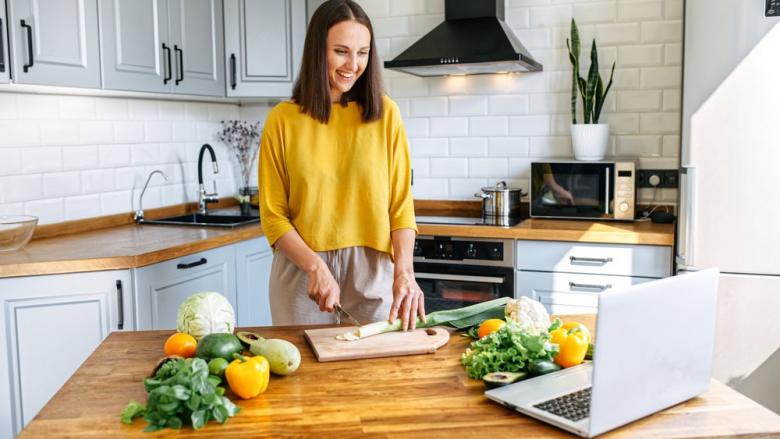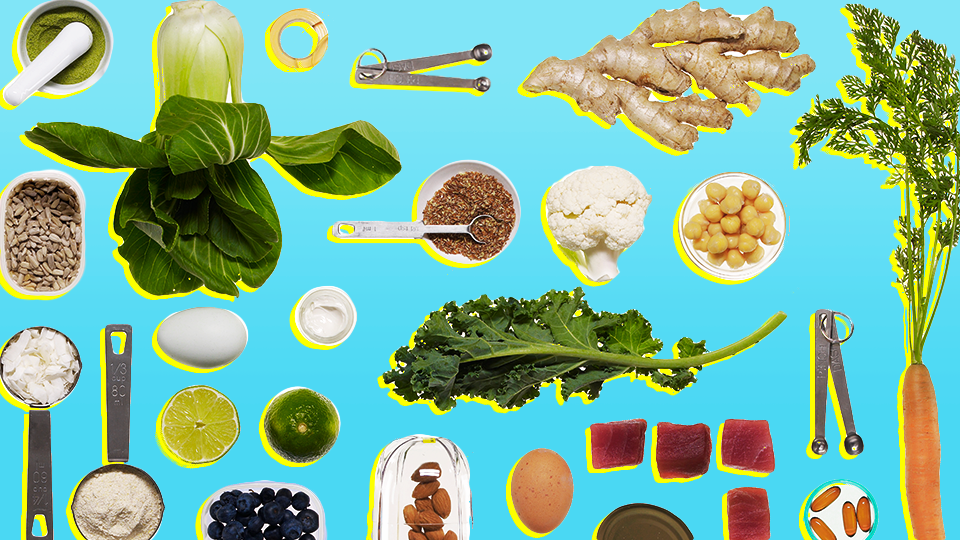
Healthy cooking isn't just a trend. You can make your own broths and stocks to control the amount of sodium and fat in your food. Make sure to use local ingredients whenever possible. Also, ensure you get an internal temperature reading on your food. You won't regret. These are just a few other ideas to help you get started. It's so easy to make healthier meals at the home!
Healthy cooking does not need to be trendy
Healthy cooking is a wonderful way to improve your health, and to enhance the quality of your daily life. Healthful cooking isn’t just a passing fad. Food companies, from Campbell Soup to PepsiCo, aren't just following a trend. They actively make healthier food choices and expand their retail distribution.
You have complete control over how much sodium and fat you put into your meals by making your own broths or stocks
Making your own broths can be both nutritious and delicious. The finished product can have a rich, earthy flavor thanks to bones. Bones can also be roasted to caramelize meat. The finished stock will be rich in gelatin and collagen from the bones of the animal, particularly the cartilage. Vegetarians can substitute stock for vegetable stock in several recipes. Bone broth is versatile and can be frozen for use at a later time.
Vegetable stocks are one of the best cooking liquids. Mix vegetables, onions, and potatoes with sweetener/thickening agents. It's great for thick stews or gravies, sauces and Swedish meatballs. Turkey stock on the other hand uses vegetables as well as spices. It's also a good way to make use of leftover pot pie. If you don't like beef or chicken stock, don't worry. There are plenty options for chicken stock and turkey stock.

The best way of knowing when food is cooked is to check its internal temperature.
A food thermometer should be your best tool for cooking meats and poultry. The outside of meat and poultry may appear cooked but the interior is not always cooked. The juices may appear clear, but the meat inside isn’t. This is a common mistake, but it doesn't necessarily indicate doneness.
Cooking food to the proper temperature kills harmful bacteria and fungi. Food poisoning can result if it's not properly cooked. As a general rule, the food's internal temperature should be high enough to allow steam to escape. You can test this by inserting a thin knife into the center of the meat or poultry.
Using local ingredients
Locally-sourced ingredients can be a great way for restaurant owners to get more customers. It's possible to overcharge customers for locally sourced ingredients. But, using seasonal ingredients will ensure that your restaurant costs are kept low. To get recipes based on what is available locally, you can also use USDA's Mixing Bowl. You can make seasonal menus using seasonal ingredients, without the need to buy seasonal items.
One of the main advantages of using locally sourced ingredients is the quality and freshness of the food. Local farmers are more likely to produce fresher and better-tasting meats and vegetables than farmed counterparts. Local farmers can be a great way to support the local economy. Locally sourced meats and produce will reduce your carbon footprint, and help support local businesses.

FAQ
How do you become a chef?
There are many ways to become a chef. You can begin by taking a course at a community college or vocational school. Next, consider attending culinary school. Finally, you can take a paid internship.
Where can i buy quality kitchen equipment
Online shopping is a great way to purchase quality kitchen equipment. There are many online shops that sell all sorts of kitchen tools. You should read user reviews and ratings before purchasing any kitchen tools. Ask other owners if they have any recommendations.
What is the minimum requirement to become a chef?
No. No. Some went to culinary school simply to gain experience. However, most chefs prefer to attend culinary school because it gives them more opportunities to learn and grow professionally. Culinary schools give students hands-on experience, which allows them to develop valuable skills as well as improve their culinary knowledge.
How long does it take to become chef? What Is the Average Career Path?
It takes five years to become a chef. You will be able to learn basic cooking techniques as well as gain practical experience working in a kitchen. After you've completed your training you can apply to be a line cook or sous chef. The average annual salary for a professional chef is between $25,000 and $60,000
How do I get hired as a chef?
First, you need to earn a culinary arts diploma in order to get a job working as a chef. Next, join a professional organisation such as ACF. This association offers certification exams as well as networking opportunities.
Statistics
- The median pay for a chef or head cook is $53,380 per year or $25.66/hour, according to the U.S. Bureau of Labor Statistics (BLS). (learnhowtobecome.org)
- On average, chefs earn $58,740 a year, according to the BLS. - learnhowtobecome.org
- According to the BLS, chefs earn $58,740 a year. (learnhowtobecome.org)
External Links
How To
How to make a perfect Omelette
Omelets is one of my favourite breakfast foods. How do you make them perfect? I've tried many different methods and recipes, but none of them seem to work! So today, I want to share some tips and tricks with you so you can make your own delicious and fluffy omelets every morning.
It is important to know that eggs can be temperamental when making omelets. They must be fresh, preferably from the organic market, and be kept cold until cooking. You must keep them cool enough to allow the whites to form properly and the yolks to become too runny if they're not kept at the right temperature. This will make your omelets appear strangely colored. If you're going to cook them immediately, it is best if the eggs are still warm.
Another tip is to separate your egg before adding it into the pan. You don't want the white to get mixed with the yolk, as this could cause the egg to curdle.
You might burn the bottom of the egg if you place the egg directly on the stovetop. This could ruin the texture of your omelet. Instead, heat the egg for 10 seconds in the microwave before placing it in the pan. The microwave heat cooks your egg just right, without it becoming too soft.
Next, let's discuss mixing the eggs. Mix eggs well together. To do this, take the bowl from the mixer and flip it upside-down. Then, vigorously shake the bowl. The egg will be thoroughly mixed in the bowl as the air is whipped.
Now comes the fun part - pouring the milk into the mixture. Mix half of the milk with the eggs. Then fold the eggs in half into the remaining milk. You don't need to worry if streaks remain. They will disappear once you flip your omelet.
After you have folded the eggs, heat the oil in a pan over medium heat. Once the oil has started to sizzle, turn the heat down to low. When the oil is hot enough, add 1/4 cup butter to the pan. Stir it around until the butter covers the entire pan. The lid should be carefully opened. Sprinkle salt in the pan. Salt will prevent the omelet sticking to the pan.
Cover the pan once you have formed the omelet. Wait for the top to set. Flip the omelet upside down or with a spatula. Cook the second side for a minute or so. Remove the omelet from the pan and serve immediately.
This recipe is best made with whole milk. However, it can also be used with skimmed milk.